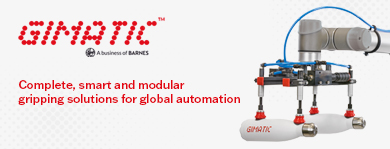Plastics are not only an important material in the manufacturing of packaging, but also become ever more important in the production of caps and closures. Market researchers at Ceresana forecast global demand for plastics caps and closures to rise to more than 1.1 trillion (1,100,000,000,000) units in 2020. Their worldwide most comprehensive market report regarding plastic caps and closures also offers a detailed analysis of individual application areas. In 2012, about 62% of all caps and closures were processed in the sector beverages (lemonades, water, fruit juices etc.). The remaining closures are utilized for applications such as food containers, cosmetics, personal care products, perfumes, pharmaceuticals, and household detergents. "The sector cosmetics and pharma in particular will experience a highly dynamic development during the next couple of years. Demand for plastic caps and closures is likely to increase by 4.9% p.a. until 2020", says Oliver Kutsch, CEO of Ceresana.
The market for plastic caps and closures is profiting substantially from an increasing use of packaging made of plastics, of PET-based disposable bottles in particular. Rising demand for bottled water and smaller packaging sizes as well as dispensing systems will provide important stimuli to growth in the future. The quality of plastic caps and closures is improving continuously. Thus, they gain access to segments that traditionally used other materials. Examples for this trend are the sub-categories wine, beer, or liquid foodstuffs such as sauces.
More restrictive packaging standards in countries of strong economic development and increasing requirements of consumers on packaging all around the world are likely to result in a rising consumption of advanced closures, such as temper-evidence caps and dispensers. Reduction of costs and weight remains a declared goal of manufacturers. On the other hand, lighter closures still have to meet the high requirements. Additional growth impulses are provided by an increase of world population, rising standards of life in emerging countries, and the spread of a westernized way of consuming. As a consequence, Ceresana forecasts a considerable increase of demand to occur in Asia in particular. This region is expected to increase world market share from 34% to approx. 42% during the next eight years.
























